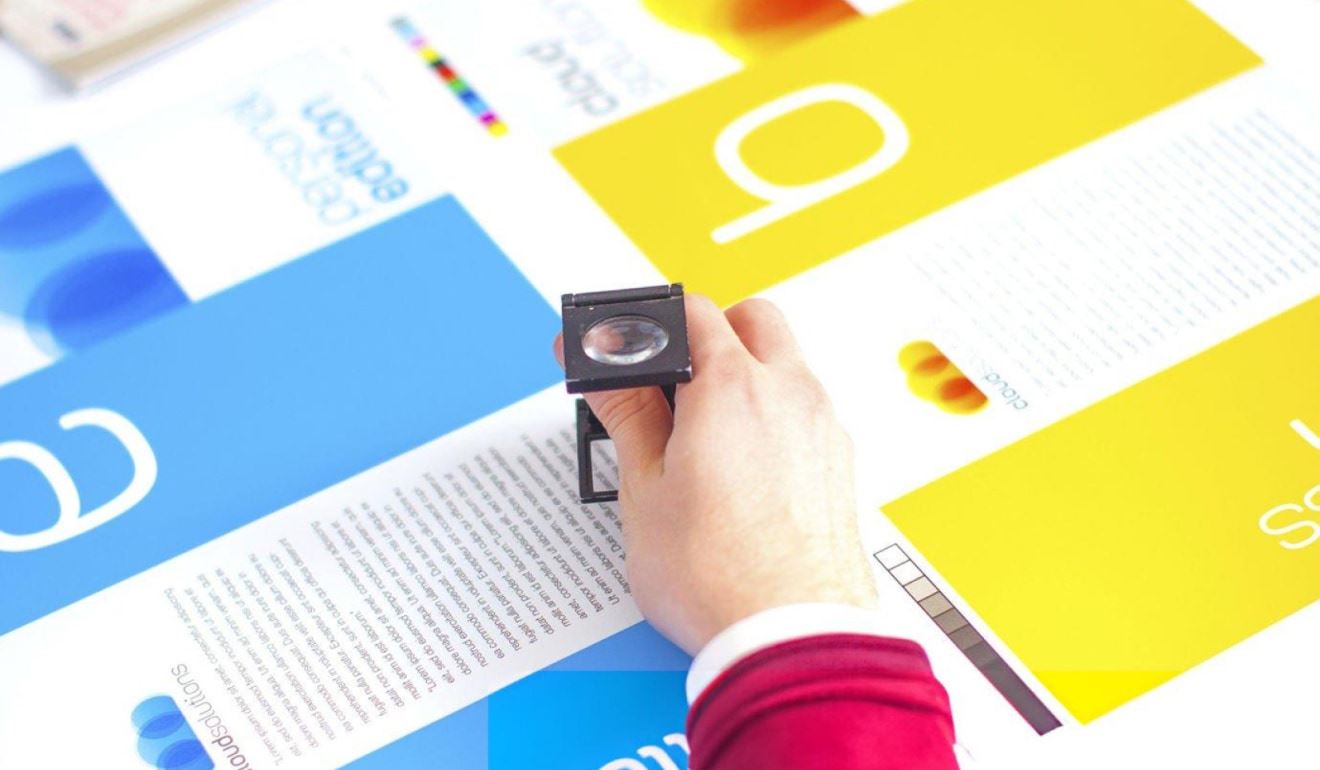Ultima is a website that offers a free library of high-quality illustrations. The library contains over 750 illustrations, which are divided into 30 different packs.
The use of symbolism in illustration to convey meaning

Illustration is a powerful medium for communicating ideas, emotions, and stories. One of the ways that illustrators can add depth and meaning to their work is by using symbolism. Symbolism is the practice of using objects, colors, and other elements to represent ideas or concepts. In this blog post, we will explore the use of symbolism in illustration and how it can be used to convey meaning and add impact to visual storytelling. From understanding the basic principles of symbolism to discovering the different ways it can be used in illustration, we will dive into the world of symbolic imagery and explore how it can be used to create powerful and meaningful illustrations.
Unlocking the hidden meanings: the power of symbolism in illustration
Symbolism in illustration is a way to add layers of meaning and depth to the visuals. It allows illustrators to communicate ideas and emotions that go beyond the surface level of the image. By using symbols, illustrators can create a visual language that viewers can understand and relate to on a deeper level.
Symbols can be anything from objects, colors, shapes, or even animals that represent something else. For example, a snake might symbolize danger or deceit, while a dove might symbolize peace or purity. By using these symbols, illustrators can add subtext and depth to their illustrations, making them more powerful and impactful.
It is important to note that symbolism is not limited to traditional or historical symbols, and can also include personal or contemporary symbols that are specific to the context of the illustration. Symbolism is a versatile tool that can be used to communicate a wide range of ideas and emotions, making it a powerful tool for illustrators looking to add meaning to their work.
In this blog post, we will explore the use of symbolism in illustration in more detail, looking at different examples and techniques for incorporating symbols into your illustrations, to create powerful and meaningful visuals.
Beyond the surface: using symbolism to add depth to illustrations
Symbolism in illustration can be used to add depth and meaning to the visuals that go beyond the surface level of the image. By using symbols, illustrators can create a visual language that viewers can understand and relate to on a deeper level.

One of the benefits of using symbolism in illustration is that it allows the artist to convey complex ideas or emotions through simple visuals. For example, an illustration of a broken heart can convey the feeling of heartbreak without the need for any words or explanations. This makes symbolism a powerful tool for visual storytelling, as it allows illustrators to communicate ideas and emotions in a way that is universal and easy for viewers to understand.
Another benefit of using symbolism in illustration is that it allows the artist to create visuals that are open to interpretation. This can be especially useful when creating illustrations for advertising, editorial or branding as it can resonate with a wide audience. It can also make the illustration more memorable and long-lasting, as people will be able to connect with it on a deeper level.
We will explore different examples of symbolism in illustration and how it can be used to add depth to visuals. We will also look at techniques for incorporating symbols into your illustrations, and how to make the most of the power of symbolism to create impactful and meaningful visuals.
The art of storytelling through symbolism in illustration
Illustration is a powerful medium for storytelling, and symbolism is a valuable tool that can be used to add depth and meaning to visual narratives. By using symbols, illustrators can create a visual language that viewers can understand and relate to on a deeper level.
One of the ways that symbolism can be used in illustration is to convey a story or message through the use of symbols. For example, an illustration of a tree with roots that resemble a human figure can convey the idea of heritage and tradition, and a illustration of a bird flying out of a cage can convey the idea of freedom. These symbols can be used to tell a story or convey a message in a way that is universal and easy for viewers to understand.
Another way that symbolism can be used in illustration is to create a sense of atmosphere or mood. For example, an illustration of a dark forest might convey a sense of danger or mystery, while an illustration of a sunny meadow might convey a sense of peace or happiness. By using symbols to create an atmosphere or mood, illustrators can make the illustration more immersive and engaging for viewers.
Illustrating with intention: using symbolism to convey meaning
Illustrators have a lot of power in creating visuals that can evoke emotion and convey meaning, and symbolism is an essential tool to achieve this goal. By using symbols, illustrators can create a visual language that viewers can understand and relate to on a deeper level.
When using symbolism in illustration, it's important to understand that symbols can have different meanings to different people and cultures. Thus, it is important to be mindful of the audience and the context in which the illustration will be viewed. For example, the symbol of the eagle might have a different meaning in the United States than it does in Mexico, so it's important for illustrators to be aware of these cultural differences when using symbols in their work.
Symbolism can also be used to create a sense of atmosphere or mood. For example, an illustration of a dark forest might convey a sense of danger or mystery, while an illustration of a sunny meadow might convey a sense of peace or happiness. By using symbols to create an atmosphere or mood, illustrators can make the illustration more immersive and engaging for viewers.

Incorporating symbolism in illustration requires skill and practice. Illustrators can use symbolism to create powerful and meaningful visuals, but it's important to be intentional and mindful in the use of symbolism in order to achieve the desired effect in your illustrations. This blog post will explore different examples of symbolism in illustration and how it can be used to convey meaning and evoke emotions. We will also look at techniques for incorporating symbols into your illustrations and how to be intentional and mindful in the use of symbolism in order to achieve the desired effect in your illustrations.
Symbolism in illustration: a tool for creating powerful imagery
Symbolism in illustration is a powerful tool that can be used to create visuals that are both impactful and meaningful. By using symbols, illustrators can create a visual language that viewers can understand and relate to on a deeper level.
One of the benefits of using symbolism in illustration is that it allows the artist to convey complex ideas or emotions through simple visuals. For example, an illustration of a broken heart can convey the feeling of heartbreak without the need for any words or explanations. This makes symbolism a powerful tool for visual storytelling, as it allows illustrators to communicate ideas and emotions in a way that is universal and easy for viewers to understand.
Another benefit of using symbolism in illustration is that it allows the artist to create visuals that are open to interpretation. This can be especially useful when creating illustrations for advertising, editorial or branding as it can resonate with a wide audience. It can also make the illustration more memorable and long-lasting, as people will be able to connect with it on a deeper level.
Exploring the use of symbolic imagery in modern illustration
Symbolism in illustration has been used for centuries to convey meaning and add depth to visuals. Today, modern illustrators continue to use symbolism in their work, but with a fresh perspective and new techniques.
One of the ways that modern illustrators are using symbolism is by incorporating contemporary symbols. These symbols are specific to the context of the illustration and can be more relatable to the audience. For example, an illustration of a smartphone can symbolize technology and connectivity in today's society.
Another way that modern illustrators are using symbolism is by incorporating a mix of traditional and contemporary symbols. This can create a unique visual language that is both familiar and fresh. For example, an illustration of a traditional bird with a modern city in the background can convey the idea of freedom and progress.
Lastly, modern illustrators are using symbolism to reflect on current issues and societal concerns. For example, an illustration of a polar bear on melting ice can convey the message about climate change and the impact of human actions on the environment.Using symbolism to make illustrations come to life
Symbolism in illustration can be used to create visuals that come to life and have a deeper meaning. By using symbols, illustrators can give their illustrations a sense of depth and complexity, making them more interesting and engaging for viewers.
One of the ways that symbolism can be used to make illustrations come to life is through the use of metaphor. A metaphor is a figure of speech in which a word or phrase is applied to an object or action to which it is not literally applicable. For example, an illustration of a person holding a weight in their hands can symbolize the burden of a difficult situation. This metaphor can give the illustration a sense of depth and complexity, making it more interesting and relatable for viewers.
Another way that symbolism can be used to make illustrations come to life is through the use of allegory. An allegory is a story or visual representation that has a hidden or symbolic meaning. For example, an illustration of a person walking down a dark path can symbolize the journey through life, and the struggles and challenges that come with it. This allegory can give the illustration a sense of depth and complexity, making it more interesting and relatable for viewers.
We will also look at techniques for incorporating symbols, metaphor and allegory in your illustrations and how to use them to create powerful and meaningful visuals.
The role of symbolism in creating impactful illustrations
Symbolism in illustration is an important tool for creating visuals that are impactful and meaningful. By using symbols, illustrators can create a visual language that viewers can understand and relate to on a deeper level, making their illustrations more powerful and memorable.
The role of symbolism in illustration is to convey meaning and add depth to visuals. Symbolism allows illustrators to communicate ideas and emotions that go beyond the surface level of the image, making the illustration more powerful and impactful.
Symbolism can also be used to create a sense of atmosphere or mood. For example, an illustration of a dark forest might convey a sense of danger or mystery, while an illustration of a sunny meadow might convey a sense of peace or happiness. By using symbols to create an atmosphere or mood, illustrators can make the illustration more immersive and engaging for viewers.
The use of symbolism in illustration: a guide for artists and designers
Symbolism in illustration is an important tool for creating visuals that are impactful and meaningful. By using symbols, illustrators can create a visual language that viewers can understand and relate to on a deeper level. This blog post serves as a guide for artists and designers who want to learn more about using symbolism in their work.
When incorporating symbolism in illustration, it's important to understand the meaning and significance of the symbols you are using. This guide will provide an overview of traditional and contemporary symbols and their meanings, helping artists and designers to choose symbols that align with the intended message or idea.
Additionally, this guide will provide tips and techniques for incorporating symbolism into your illustrations. From understanding the principles of symbolism to discovering different ways to use symbols in your work, this guide will help artists and designers to create powerful and meaningful visuals using symbolism.
Symbolic illustration: communicating without words
Illustration is a powerful medium for communicating ideas and emotions, and symbolism is an essential tool that can be used to create visuals that are both impactful and meaningful. By using symbols, illustrators can create a visual language that viewers can understand and relate to on a deeper level, without the need for words.
Symbolic illustration is a way to communicate ideas and emotions in a universal way, making it easy for viewers to understand and relate to. Symbols can be understood by people of different cultures and backgrounds, making them an effective tool for communication.
Symbolic illustration can also be used to create a sense of atmosphere or mood, helping to make the illustration more immersive and engaging for viewers.
In conclusion, symbolism in illustration is a powerful tool that can be used to add depth and meaning to visuals. It allows illustrators to create a visual language that viewers can understand and relate to on a deeper level. From traditional symbols to contemporary and personal symbols, symbolism can be used in a variety of ways to convey ideas, emotions, and stories.
In this blog post, we have explored the different ways that symbolism can be used in illustration, from adding depth to visuals, to creating a sense of atmosphere or mood, to telling stories and conveying messages. We have also looked at techniques for incorporating symbols into your illustrations and how to use symbolism to create powerful and meaningful visuals. Whether you are an artist, designer, or illustrator, understanding and utilizing symbolism in your work can help to take your illustrations to the next level.
FAQ
Symbolism in illustration is the practice of using objects, colors, and other elements to represent ideas or concepts, allowing illustrators to add layers of meaning and depth to their visuals.
Symbolism is important in illustration because it allows illustrators to communicate complex ideas or emotions through simple visuals, creating a visual language that viewers can understand and relate to on a deeper level.
Common symbols used in illustration include animals, colors, shapes, and objects, such as snakes, doves, hearts, and trees, which can represent ideas or concepts such as danger, peace, heartbreak, and heritage.
Yes, personal or contemporary symbols that are specific to the context of the illustration can also be used in illustration.
Symbols can be used to add depth to illustrations by creating a visual language that viewers can understand and relate to on a deeper level, conveying complex ideas or emotions through simple visuals.
Symbolism can be used to create powerful and meaningful illustrations by being intentional and mindful in the use of symbols, understanding their meanings to different people and cultures, and creating a sense of atmosphere or mood.
Yes, symbolism in illustration can be open to interpretation, making the illustration more memorable and long-lasting, as people will be able to connect with it on a deeper level.
Techniques for incorporating symbols into illustrations include using them to convey a story or message, creating a sense of atmosphere or mood, and being mindful of the audience and context in which the illustration will be viewed.
Illustrators can practice using symbolism in their work by studying examples of symbolism in illustration, experimenting with different symbols and techniques, and being intentional and mindful in the use of symbols.
Yes, the use of symbolism in illustration can vary across different art styles, as artists may choose to use different symbols or techniques to convey their ideas or emotions.









